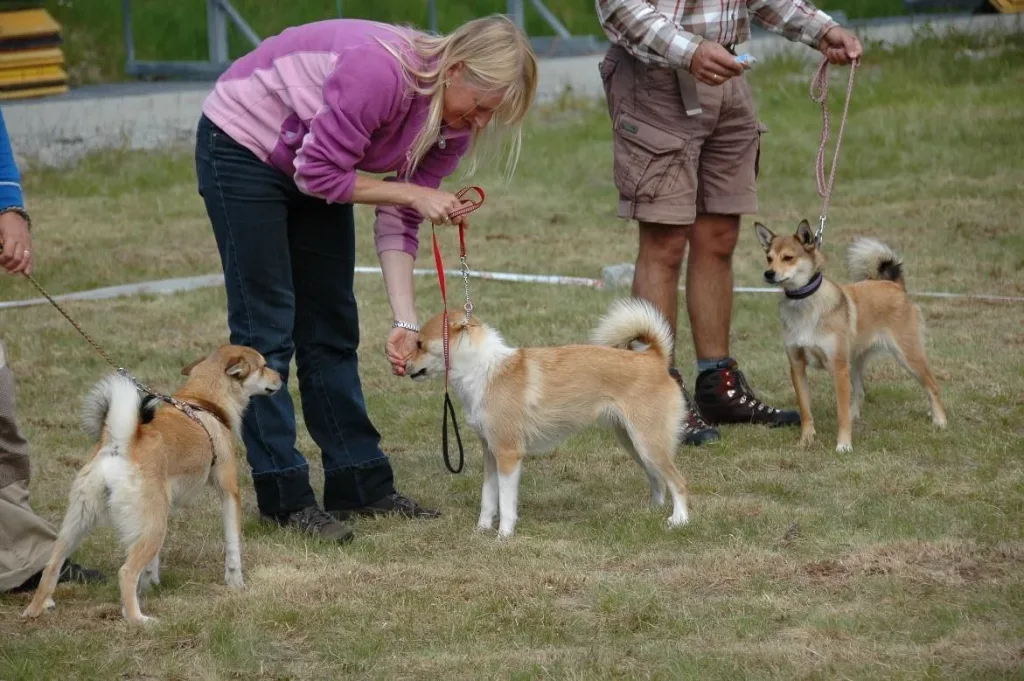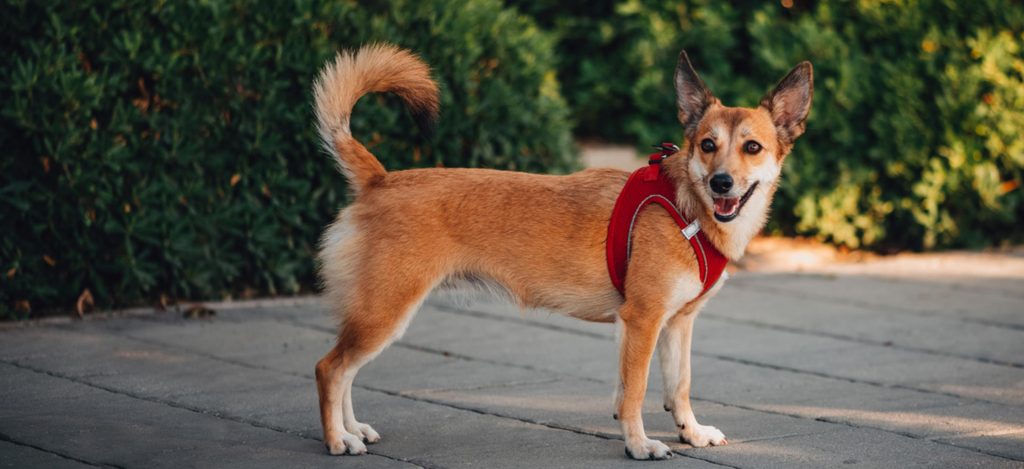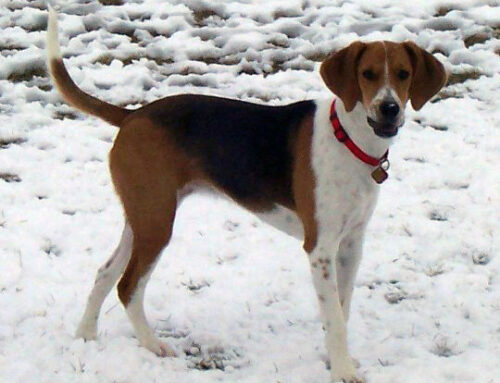Are you in search of a unique and fascinating dog breed to add to your family? If so, you might want to consider the Norwegian Lundehund. This breed is renowned for its unusual physical characteristics, including six toes on each foot, an incredibly flexible spine, and the ability to close their ears to protect them from dirt and water. However, there’s more to the Norwegian Lundehund than just their physical traits. In this article, we’ll explore what makes this breed so special and whether it might be the right choice for you as a pet owner.
Breed Category: Spitz-type
Country of Origin: Norway
Average Size:30-38 cm
Average Weight:6-9 kg
Average Life Span: 12-14 years
Grooming Requirements: Moderate
Exercise Requirements:High
History and Origin
The Norwegian Lundehund is a unique breed of dog that has a fascinating history and origin. This breed is known for its ability to hunt puffins, which are seabirds found in Norway. The Lundehund is also known for its unusual physical characteristics, such as its six toes on each foot and its ability to bend its head backward until it touches its spine.
The Lundehund has been around for centuries, and its origins can be traced back to the Viking era. The breed was developed on the remote islands of Lofoten and Værøy, which are located off the coast of Norway. The Lundehund was bred specifically for hunting puffins, which were a valuable source of food for the people living on these islands.
The Lundehund’s unique physical characteristics were developed over time to help it hunt puffins. The breed’s six toes on each foot allowed it to climb steep cliffs and rocky terrain with ease. The Lundehund’s flexible neck and shoulders allowed it to maneuver through narrow crevices and tight spaces in search of puffin nests. The breed’s ability to close its ear canals also protected its ears from the loud screeching of the puffins.
The Lundehund’s popularity as a hunting dog declined in the 1800s when the Norwegian government banned the hunting of puffins. The breed nearly went extinct, but a small group of dedicated breeders worked to preserve the Lundehund. In 1962, the Norwegian Lundehund Club was formed, and the breed was officially recognized by the Norwegian Kennel Club.
Today, the Lundehund is still a rare breed, with only a few hundred dogs in existence. The breed is recognized by the American Kennel Club and is gaining popularity in the United States. The Lundehund’s unique physical characteristics and hunting abilities make it a fascinating breed for dog enthusiasts.
In conclusion, the Norwegian Lundehund is a breed with a rich history and unique origin. Developed for hunting puffins on remote islands off the coast of Norway, the Lundehund’s physical characteristics were specifically bred to help it navigate the rugged terrain and tight spaces where puffins nest. Although the breed nearly went extinct, it has been preserved by a dedicated group of breeders and is gaining popularity around the world. The Lundehund’s unusual traits and hunting abilities make it

Size and Breed Category
The Norwegian Lundehund is a small breed of dog that originated in Norway. They are classified as a Spitz-type dog and are known for their unique physical characteristics. Lundehunds are typically between 30-40cm in height and weigh between 6-9kg. They have a distinctive six-toed foot structure, which allows them to climb steep cliffs and rocky terrain with ease. Additionally, they have a flexible neck that can bend backwards, allowing them to touch their spine to their head. This unique feature is thought to have developed to help them navigate narrow crevices while hunting puffins, which were a primary food source for the breed. Lundehunds have a double coat that is typically brown, black, or white in color. They are a rare breed, with only a few hundred registered worldwide.
The Norwegian Lundehund is a breed that is well-suited to an active lifestyle. They are energetic and require regular exercise to maintain their physical and mental health. Lundehunds are intelligent and independent, which can make them challenging to train. However, they are also loyal and affectionate with their owners. They have a strong prey drive, which can make them unsuitable for homes with small pets. Lundehunds are also prone to certain health issues, including digestive problems and joint issues. As a result, it is important for owners to provide them with a balanced diet and regular veterinary care. Despite their unique physical characteristics and challenging personality traits, the Norwegian Lundehund is a beloved breed among those who appreciate their distinctive qualities.
Fur Length and Colour
The fur of the Norwegian Lundehund is thick and double-layered, providing excellent insulation against the harsh weather conditions of its native Norway. The outer coat is long and rough, while the undercoat is soft and dense. The fur on the neck and shoulders is particularly thick, forming a mane-like appearance. The fur on the tail is also long and bushy, giving the tail a fox-like appearance. The fur on the legs is shorter and smoother, allowing for greater flexibility and agility. The most common fur colours for the Norwegian Lundehund are black, white, and reddish-brown, often with white markings on the chest, feet, and tail.
The Norwegian Lundehund’s fur is unique in that it has a distinctive feature known as the “sixth toe.” This extra digit is located on the inside of the front legs and is covered in fur, making it difficult to see. The fur on the sixth toe is longer and thicker than the fur on the rest of the paw, providing extra protection and grip when climbing steep cliffs and rocky terrain. The fur on the ears is also noteworthy, as it is thick and stands upright, giving the ears a pointed appearance. The fur on the face is short and smooth, with a distinctive black mask around the eyes and muzzle. Overall, the Norwegian Lundehund’s fur is well-suited to its rugged and challenging environment, providing both protection and agility.
Termperament and Trainability
Norwegian Lundehunds are known for their independent and curious temperament. They are intelligent dogs that require a lot of mental stimulation to keep them happy and engaged. They can be quite stubborn at times, but with consistent training and positive reinforcement, they can be taught to follow commands. Lundehunds are also known for their strong hunting instincts, which can make them difficult to train off-leash. However, with proper socialization and training, they can learn to control their impulses and become well-behaved companions.
When it comes to trainability, Norwegian Lundehunds can be a bit of a challenge. They are highly intelligent dogs that can quickly become bored with repetitive training sessions. They require a lot of variety in their training to keep them engaged and interested. Lundehunds are also known for their strong will and independence, which can make them resistant to training at times. However, with patience and consistency, they can be taught to follow commands and become well-behaved pets. It’s important to start training early with Lundehunds and to use positive reinforcement methods to encourage good behavior.

Known Health Conditions
The Norwegian Lundehund is a breed of dog that is known to suffer from a number of health conditions. One of the most common health issues that this breed faces is gastrointestinal problems. Lundehunds are prone to developing a condition called gastroenteritis, which is an inflammation of the stomach and intestines. This can cause symptoms such as vomiting, diarrhea, and abdominal pain. Additionally, Lundehunds are also at risk of developing a condition called protein-losing enteropathy, which is a disorder that causes the body to lose protein through the intestines. This can lead to malnutrition and other serious health problems.
Another health condition that is commonly seen in Norwegian Lundehunds is a type of eye disease called progressive retinal atrophy. This is a genetic condition that causes the cells in the retina to degenerate over time, eventually leading to blindness. Lundehunds are also prone to developing a condition called Lundehund Syndrome, which is a collection of health problems that can include digestive issues, joint problems, and skin allergies. Finally, this breed is also at risk of developing a type of cancer called histiocytic sarcoma, which can affect various organs in the body and is often fatal.

Openness to Strangers
Norwegian Lundehunds are known for their friendly and welcoming nature towards strangers. They are a breed that is always eager to meet new people and make new friends. This trait is particularly evident in their behaviour towards visitors to their home, where they will often greet them with wagging tails and excited barks. Lundehunds are also known for their sociable nature when out and about, often approaching strangers with a curious and friendly demeanour. This openness to strangers is a key characteristic of the breed and is one of the reasons why they make such great family pets.
Despite their friendly nature, Norwegian Lundehunds can be quite reserved when it comes to physical contact with strangers. They are not a breed that enjoys being picked up or cuddled by people they do not know well. Instead, they prefer to interact with strangers on their own terms, often sniffing and investigating them before deciding whether or not to engage further. This cautious approach to physical contact is not a sign of aggression or fear, but rather a reflection of the breed’s independent and self-reliant nature. Overall, the Norwegian Lundehund’s openness to strangers is a testament to their friendly and sociable personality, making them a popular choice for families and individuals alike.
Playfulness Level
The Norwegian Lundehund is a highly playful breed of dog that loves to engage in various activities. They are known for their energetic and lively nature, which makes them an excellent companion for families with children. These dogs are always up for a game of fetch or a run in the park, and they have a natural curiosity that drives them to explore their surroundings. Their playful nature also makes them great at learning new tricks and commands, as they are always eager to please their owners.
In addition to their love for play, the Norwegian Lundehund is also a highly social breed of dog. They thrive on human interaction and enjoy spending time with their owners and other dogs. This makes them an excellent choice for families who are looking for a dog that can provide both companionship and entertainment. However, it is important to note that the Norwegian Lundehund can be quite stubborn at times, and they may require some patience and persistence when it comes to training. Overall, the playful and social nature of the Norwegian Lundehund makes them a beloved breed among dog owners.
Suitability as a Pet for Children
Norwegian Lundehunds have a unique physical structure that allows them to climb steep cliffs and navigate narrow crevices. They are highly intelligent and independent dogs that require a lot of mental stimulation and exercise. Their strong prey drive and tendency to bark can make them challenging pets for inexperienced owners. However, with proper training and socialization, they can make loyal and affectionate companions for older children who are able to handle their energy and strong-willed nature.

Exercise Needs
Norwegian Lundehunds require a significant amount of exercise to maintain their physical and mental health. As an active breed, they need at least 60 minutes of daily exercise, which can be achieved through a combination of walks, runs, and playtime. It is important to note that they have a high prey drive and may chase small animals, so it is best to keep them on a leash or in a secure area. Additionally, they enjoy participating in dog sports such as agility and obedience training, which can provide mental stimulation and physical exercise. Overall, providing adequate exercise for Norwegian Lundehunds is crucial for their well-being.
In addition to physical exercise, Norwegian Lundehunds also require mental stimulation to prevent boredom and destructive behavior. They are intelligent dogs that enjoy problem-solving activities and learning new tricks. Interactive toys, such as puzzle feeders, can provide mental stimulation while also satisfying their natural instinct to forage for food. Training sessions can also be a great way to engage their minds and strengthen the bond between the dog and owner. It is important to provide a variety of mental stimulation activities to prevent the dog from becoming bored or restless. By meeting their exercise and mental stimulation needs, Norwegian Lundehunds can lead happy and healthy lives.

Suitability for a Multi-Pet Family
Norwegian Lundehunds have a unique history as they were originally bred to hunt puffins on steep cliffs. Due to their hunting background, they have a strong prey drive and may not get along with smaller pets such as cats or rabbits. However, with proper socialization and training, they can coexist peacefully with other dogs and larger animals. It is important to note that each individual dog may have their own personality and preferences when it comes to interacting with other pets.
Housing Requirements
The Norwegian Lundehund requires a living space that is large enough to accommodate their active and energetic nature. They need a home with a secure and spacious yard where they can run and play freely. The yard should be fenced to prevent them from wandering off as they have a strong hunting instinct. The Lundehund also needs a comfortable and cozy indoor space where they can rest and relax after a long day of play. The indoor space should be well-ventilated and have enough room for them to move around comfortably. Additionally, the Lundehund requires regular exercise and mental stimulation to keep them healthy and happy.
The Norwegian Lundehund has a thick and dense coat that requires regular grooming to keep it in good condition. They shed moderately throughout the year, and their coat needs to be brushed at least once a week to prevent matting and tangling. The Lundehund also needs regular baths to keep their coat clean and healthy. They are prone to ear infections, and their ears need to be cleaned regularly to prevent any infections. The Lundehund is a highly intelligent breed and requires regular training and socialization to prevent any behavioral issues. They respond well to positive reinforcement training methods and enjoy learning new tricks and commands.
Summary
The Norwegian Lundehund has a unique history and is a rare breed in the UK. They were originally bred for hunting puffins and have six toes on each foot, making them excellent climbers. While they may not be the most common pet, they can make great companions for those who are willing to put in the time and effort to train and socialize them properly. They are known for their intelligence and independence, but also their loyalty and affection towards their owners. Overall, the Norwegian Lundehund can be a suitable pet for those who are looking for a unique and interesting companion.
Norwegian Lundehund Dog FAQS
Norwegian Lundehunds can be stubborn and independent, making training a challenge. Consistency and positive reinforcement are key.
Norwegian Lundehunds are generally good with children, but early socialization is important.
Yes, Norwegian Lundehunds are prone to digestive issues and hip dysplasia.
Norwegian Lundehunds are known to be vocal and may bark frequently.
Yes, Norwegian Lundehunds shed moderately throughout the year and heavily during shedding season.
A Norwegian Lundehund typically weighs between 6-9 kg.
Norwegian Lundehunds need at least 30-60 minutes of exercise per day.
Norwegian Lundehunds should be brushed at least once a week and bathed as needed.
The average height of a Norwegian Lundehund is 32-38 cm.
The average life expectancy of a Norwegian Lundehund is 12-14 years.






Leave A Comment